Meet the DJI Mini 4 Pro. DJI’s newest featherweight marvel weighing just under 250g.
It is also the first model in DJI’s Mini series to have omnidirectional object recognition and avoidance. It also has a handy tool called Waypoints, which allows you to pre-plan your flights and replay routes over and again.
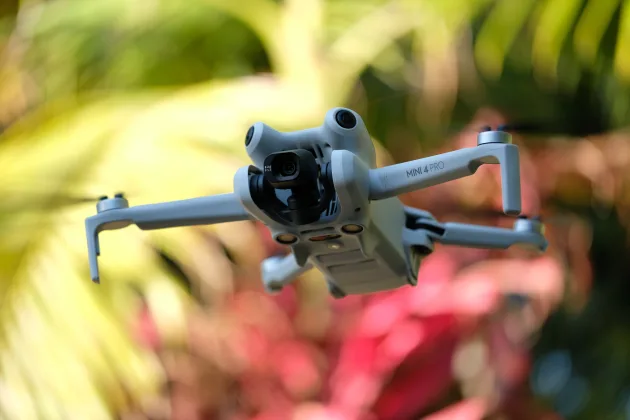
The Mini 4 Pro with DJI RC-N2 Remote Controller and one Intelligent Flight battery starts at $1,219, or $1,499 with the RC 2 Remote Controller. The Fly More Combo, which contains the RC 2, three Intelligent Flight batteries, a two-way charging hub, and a carrying case, is $1,849, while the Fly More Combo Plus, which adds Intelligent Flight Plus batteries, is $1,939.
So, after a few weeks of putting it through its paces, has the buzz reached new heights, or is it time to contemplate an upgrade from the Mini 3 Pro, which debuted not long ago? Let us find out.

Build quality
The Mini 4 Pro is small and light, weighing only 250 grams – which is astounding when you consider how much a regular block of butter weighs!
The drone folds down smoothly, making it an excellent alternative for travel when space and weight are limited – a step down in size from the Air series.
It includes multiple obstacle sensors on all sides, as expected, and the vents on the Mini 4 Pro are larger and more obvious, allowing for improved ventilation to assist avoid overheating.
Externally, there’s a microSD card port and a slew of six fisheye vision sensors on the front, top, and bottom to handle omnidirectional obstacle recognition and avoidance.

This makes flying safer, especially for newcomers, by giving users the option to either stop in front of or skip an impediment.
If you choose the more expensive Fly More Combo Kit with RC 2 controller, you will have a more immersive flying experience. The RC 2 controller eliminates the need to connect your smartphone to the controller, and it also includes an efficient shoulder bag that contains the bundled three-battery charger, remote, and drone, with enough to spare for all of your extras.
It’s also a nice-looking purse, and the extra protective strap for the Mini 4 Pro is a thoughtful touch. It protects the propellers when you’re slipping it in and out of the backpack.
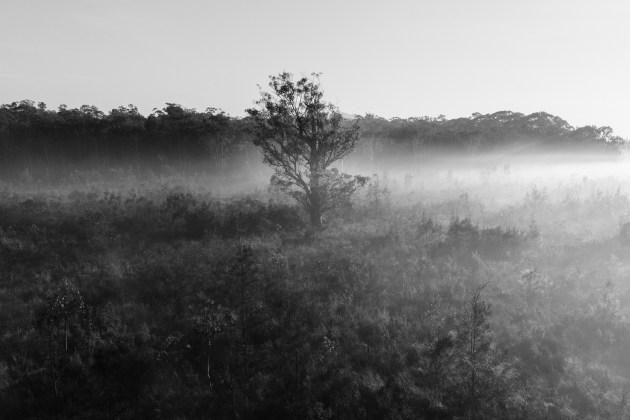
Owners of the Mini 3 Pro will be glad to hear that the Mini 4 Pro uses the same batteries, so if you already have a collection, you’ll save money when it time to upgrading.
In terms of battery life, the basic Intelligent flying battery provides a respectable 34 minutes of flying time, while the Intelligent Flight Plus battery provides an extended flight time of up to 45 minutes.
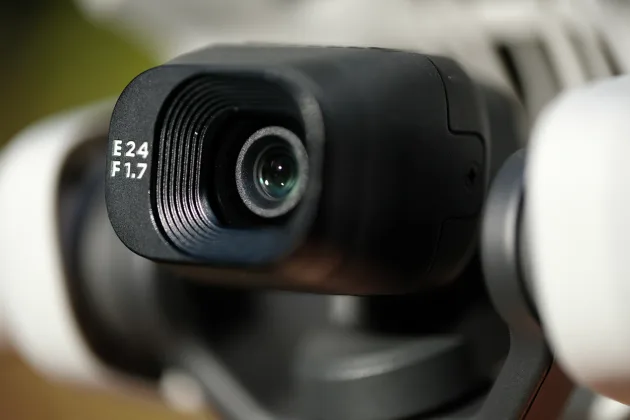
Keep in mind, however, that utilizing the Intelligent Flight Plus battery raises the entire weight over the 250g level. This means you’ll have to forego some of the benefits of flying under the weight restriction.
Finally, the Mini 4 Pro has internal storage, but just 2GB, which is only enough for a few minutes of 4K30 recording. Consider it a last-minute backup for a misplaced memory card.

The camera
The Mini 4 Pro’s camera is identical to that of its predecessor, offering comparable picture and video quality. However, it ups the ante by including D Log M, a flatter and more gradable image profile than the prior D Cinelike.
The 48MP Type 1/1.3 CMOS sensor, which is most likely the same as in the Mini 3 Pro, now has dual native ISO for improved image quality.
It also has the same 24mm equivalent lens and F1.7 aperture that I used in my tests and produced consistently good results. The camera can additionally zoom up to 2X for images and 4X for video recording.
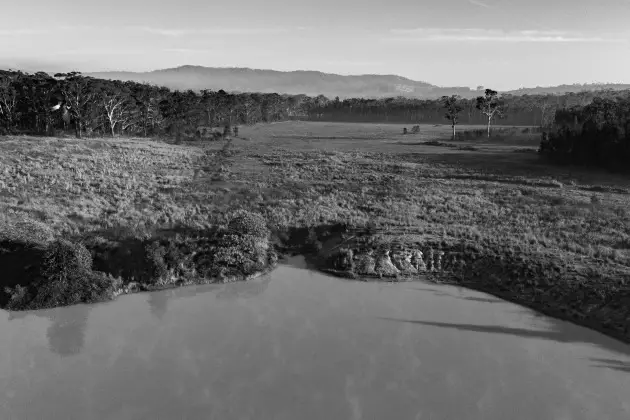
When it comes to recording images from various angles, the Mini 4 Pro allows users to tilt the camera a full 90 degrees for vertical shots, which is excellent for social media platforms like Instagram and TikTok. This is accomplished via the gimbal’s ability to move from -90 to 60 degrees.
In addition, DJI provides an ND filter pack, which allows you to modify the shutter speed in harsh or difficult lighting conditions. And, if you want to broaden your field of view, the wide-angle lens adapter (which costs around $50) will do exactly that. It raises your temperature from 82.1 degrees to a stunning 100 degrees, allowing you to explore new creative avenues.
During testing, I noticed slight barrel distortion while shooting close subjects, although this naturally lessens as you move further away. It’s worth remembering, though.

Video
The Mini 4 Pro has a maximum frame rate of 4K at 100 fps or 1080p at 200 fps, as well as 4K at 60 fps and 1080p at 120 fps. You can digitally zoom two times in 4K and four times in 1080p with no loss of quality.
Videographers will like DJI’s D-LogM, which increases dynamic range for creative post-production. While DJI offers a LUT for easier conversion, extra tweaking may be necessary.
It’s worth noting that the Mini 4 Pro also has HLG mode, which increases dynamic range. It also has 10-bit 4:2:0 capture for more resolution and less banding.

In flight
The Mini 4 Pro continues DJI’s user-friendly history, and as you’d expect, no manual marathon is required if you’re familiar with the company’s technology. And, despite its diminutive size, this small powerhouse glides through the air with the agility of its larger siblings.
The Mini 4 Pro features Waypoints Flight, which allows you to plan flights ahead of time for people who enjoy organizing their flying experiences. Furthermore, Cruise Control maintains a constant speed throughout recording, decreasing flying weariness, both of which are new improvements to the Mini series.
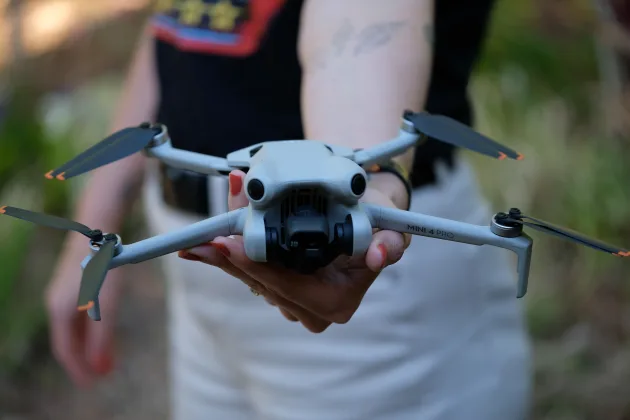
DJI has introduced ActiveTrack 360 to the Mini 4 Pro’s intelligent flying modes. The first is the Touch Trace function. This enables for more exact tracking modifications in both direction and distance, which is especially useful when monitoring dynamic subjects such as automobiles or humans.
The Mini 4 Pro also receives a new transmission system, the O4. During testing, I discovered that the acquisition of the GPS signal was incredibly rapid after switching on the drone, and I had no problems with connectivity even while lowering below a mountain range, something my own Air 2S troubles with.

In summary
Though it may be an incremental update, the DJI Mini 4 Pro builds on the strengths of the Mini 3 Pro. With improved obstacle avoidance, improved camera capabilities, and a greater selection of flying modes, it offers a sophisticated option for both inexperienced and experienced drone users.
The wrap-up
Handling (4 star)
Great for its compact size, lightweight, and it handles well.
Build Quality (2.5 stars)
Good. Although the plastic build necessary to keep the weight down does feels cheaper than other more ‘premium’ DJI drones.
Features (4 star)
Great features such as new sensors and transmission system make it worthy.
Image Quality (3 star)
Decent, but at 48MP images aren’t perhaps as sharp as you might expect.
Conclusion :
The DJI Mini 4 Pro is the obvious choice whether you’re new to drones, thinking about upgrading, or looking for something more affordable. But if your Mini 3 or Mini 3 Pro is already taking you to new heights, the update might not be the game-changer you were hoping for.
Therefore, even if the Mini 4 Pro may not represent a significant advancement, it does improve on an already wonderful flying experience. It meets almost all needs, is adaptable, and may be more enticing to many drone users due to its affordability and small size.


